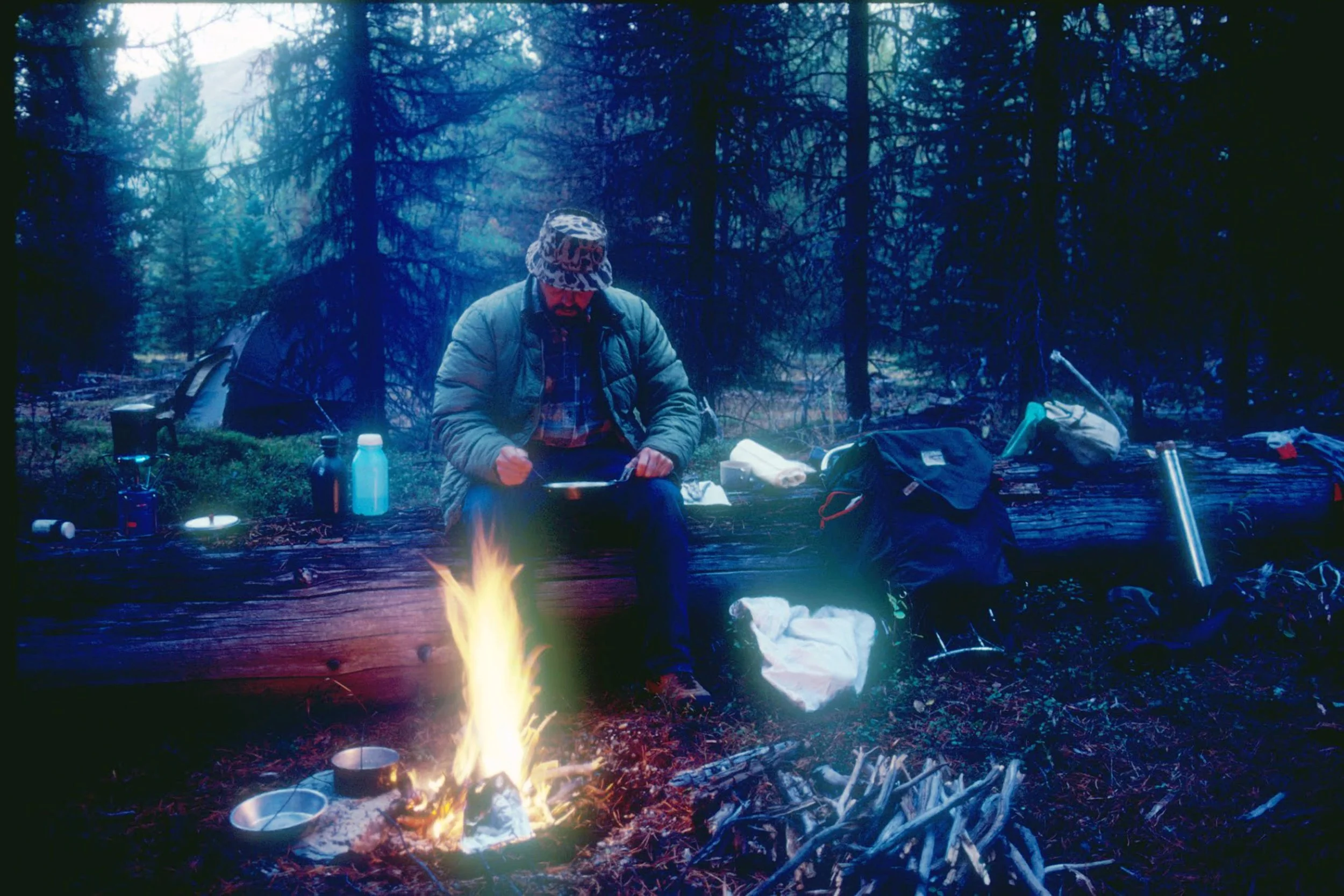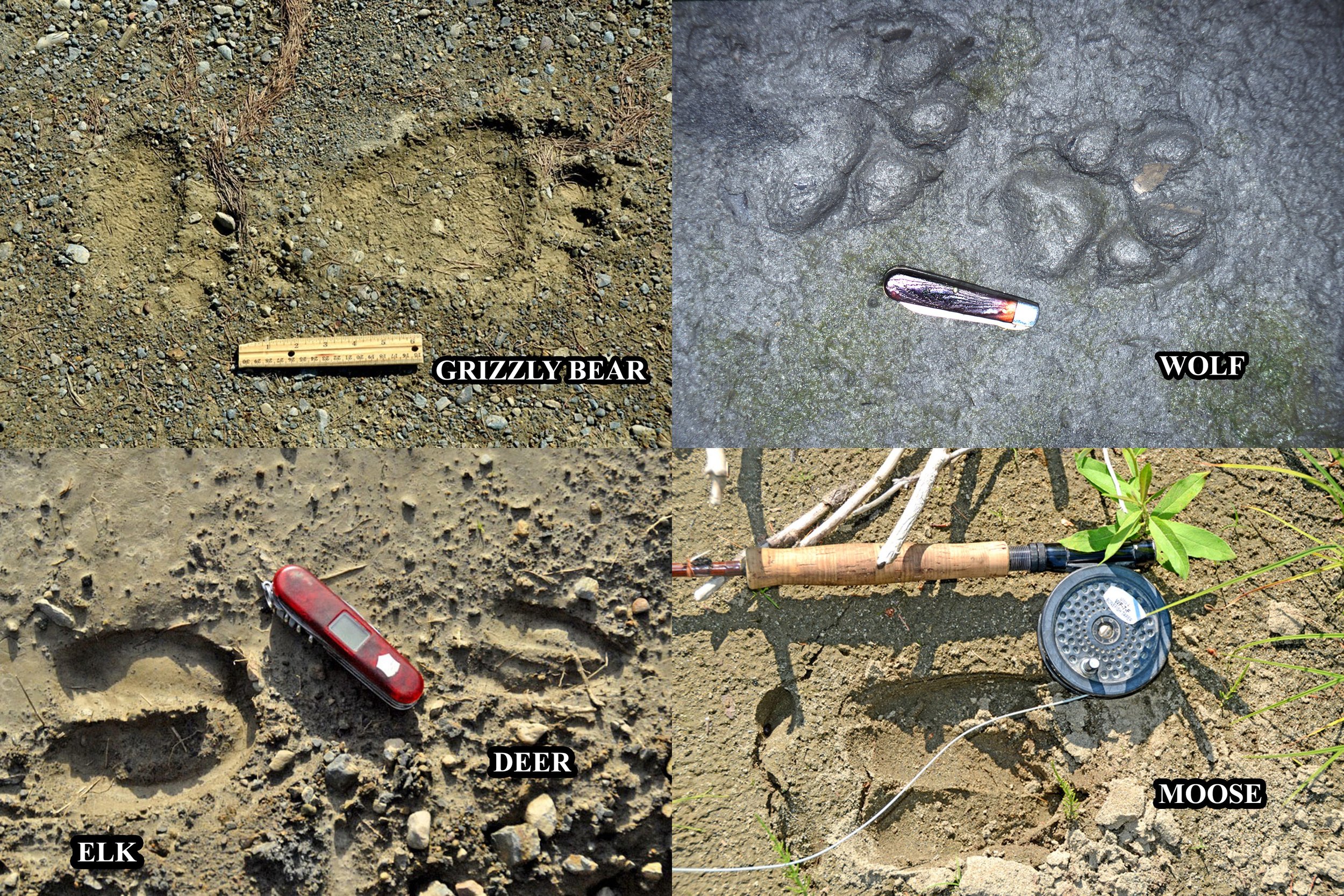Renewal
By: Bud Journey
My fall hormones are acting up.
As surely as the first autumn cold snap stirs the loins of the bull elk, the dropping temperatures also send the message to my brain: “Teepee Creek...solitude...fly-fishing...cutthroat trout.” It’s an irresistible imperative; my brain can't refuse it. I sit, glassy-eyed, and stare northward out the window until my wife can stand it no longer.
“Would you get out of here,” she finally says, “and go on up to Teepee Creek and camp out for a few days and catch some of those silly trout and get it out of your system for another year? Until you do, we're not going to be able to have a coherent conversation around here.”
“But I have work to do. I really should stay home,” I protest (feebly).
“It’s OK,” she says. “The insurance is paid up in case a grizzly eats you. Now, get out of here.”
“Well, all right,” I concede, “You’re making very good sense, as usual. I really should go.”
Edie smiles, kisses me on the cheek, and says, “Yes, the sacrifices you make for me ...”
Coincidentally, my gear is already packed, and I'm underway in minutes. Three hours later, I park at the end of a primitive 4-wheel-drive road, I grab my backpack and fishing gear, then ease into the forest. There is no trail: perfect!
The early fall season is an active time for wildlife in this part of Montana. The moose are in full rut, and the elk are bugling, while working out a hierarchy of the biggest and baddest bulls. Bighorn sheep and mule deer are still in bachelor groups during the truce time before their own annual wars of dominance. Bears are working the berry patches, fattening up before denning time in October and November. Fall sparkles here, as nature cleanses the land with cool, damp air, and the golden larch trees paint the Indian summer hillsides.
This annual sojourn accesses the least used piece of land that I know about and acts as a catalyst for my personal yearly renaissance. My usual heavy pack is no burden as I head down the hill. I pass by extensive browse and grass for deer, elk, moose, and bighorn sheep. Berries grow in abundance for foraging bears and grouse. Mountain lions, coyotes, lynxes, and wolves flourish on the plethora of plant-eaters that gather in the Teepee Creek drainage. Perhaps more importantly, though, there is not much of anything for humans, except solitude, the company of wildlife, and good fly-fishing.
Signs of wildlife abound at Teepee Creek.
That makes it ideal for me.
When I finally emerge from the forest, a pristine Teepee Creek greets me with thick streamside vegetation, deadfalls, and bogs that impede my travel. Raspberry thorns join the devil's club to assail any exposed patches of skin. Human-made trails are completely absent. In short, the going is a real pain for humans, but I willingly abide by it. Deer, elk, and moose tracks abound along the sand bars of the creek, and an occasional black bear track covers those of the ungulates. But there are no human tracks, except for my own, and no other evidence of human intrusion.
While skirting a beaver pond, I step over a muddy stream-access chute used by the industrious little rodents, and there is the distinct and unmistakable imprint of a grizzly bear track. I know it is fresh because the beavers haven’t yet obliterated it with their constant trips up and down the bank. I suppress a shudder as I pat the .44 magnum on my hip, and after a furtive glance over my shoulder, I continue downstream. Much to my surprise and relief, the bear decides that a chubby, middle-aged, (nervous) fisherman is not on his menu for the day. He lets me pass without incident.
The author fighting a Teepee Creek cutthroat trout.
By the time I reach a good camping site, the day is over half gone. I quickly set up camp, gather firewood, and hang the food from a high tree-limb before grabbing my six-section backpacking fly rod and heading downstream.
At water’s edge, I rig up my rod and tie on a gray floss fly of my own design. It has a gray hackle, mosquito-like wings, and deer-hair tail, tied on a size twelve, long-shanked hook. It doesn't really matter much which fly I use, though. These naïve natives hardly ever see a hook and will attack about anything I throw at them.
Working the gray nymph through the deepest pools, I have no problem enticing the cutts into action, and during the last hours before dark, I catch and release seventeen of the little natives. They range in size from ten to sixteen inches in length. As the light fades, I head back toward camp, feeling refreshed.
A Teepee Creek cutthroat trout.
About a hundred yards from camp, I walk by a sandy spot on the inside bend of the stream, and there in the sand is the distinct print of an adult wolf. Unlike the grizzly print, the wolf track raises no uneasiness on my part. Instead, I feel good about being able to share this territory with one of the most successful predators in the lower forty-eight states – and one of the least dangerous toward humans.
After a dinner of freeze-dried food, I sit on a log, contemplating the campfire, looking at the stars, and listening for vocalizations from my canine neighbor. The wolf remains silent, however, and the crisp autumn air finally drives me into the tent and the warmth of my down sleeping bag.
Not long before dawn, I’m awakened by a soulful howling. It’s the wolf – and some of his buddies. He and his pack-mates are performing a wolf concert, and I feel like it is just for me. In all probability, I am the only human attendee.
The wolf serenade continues for a good half-hour, then ends abruptly as dawn arises. I am soon out of bed, rigging up my flyrod. One more stint with the Teepee Creek cutts, and I’ll be renewed, ready to merge back into the frenetic cacophony of human habitat.
Have you had a great out experience? Join Global Outdoors and write a review to tell everyone about it! We’re building the home for trusted reviews of outdoor experiences, outfitters, and guides.





